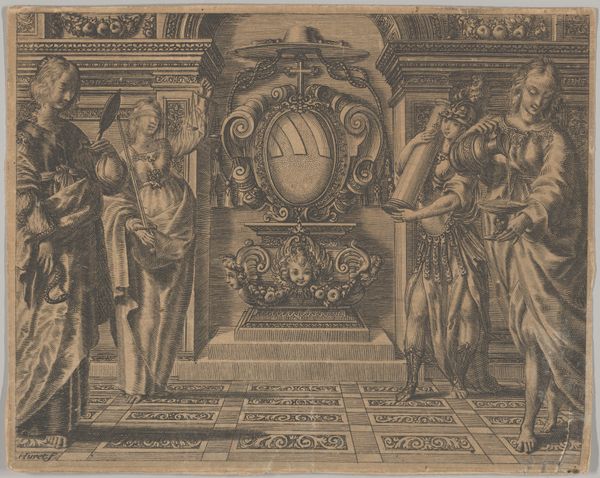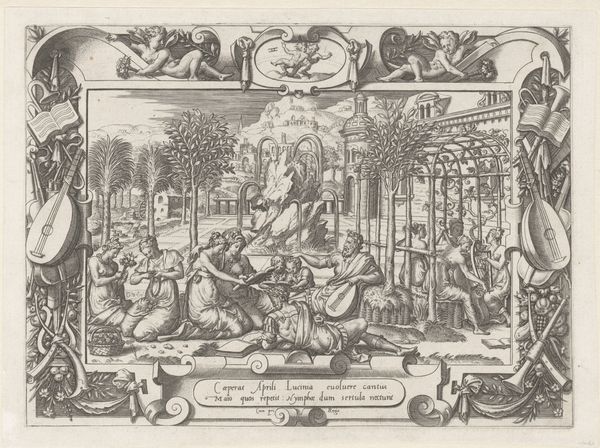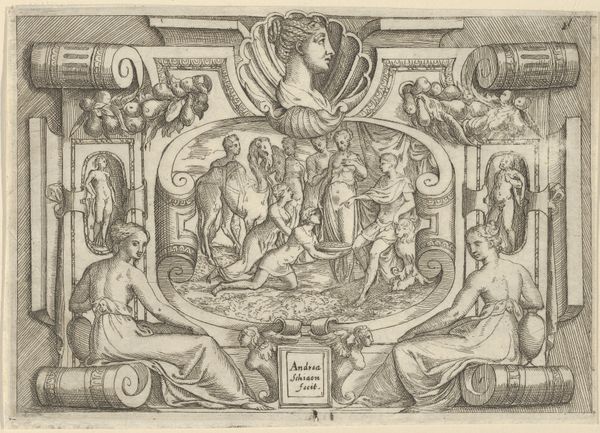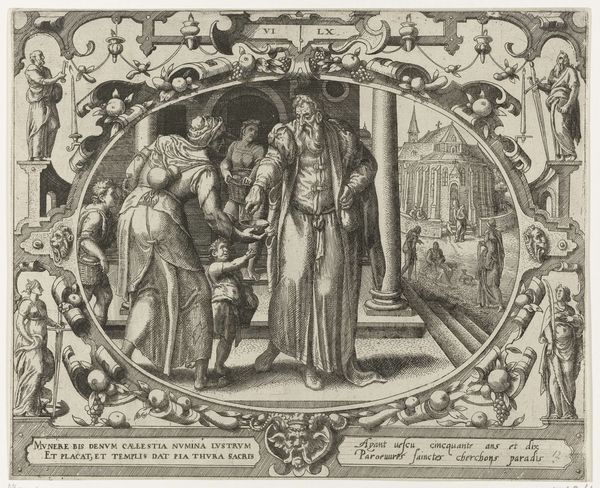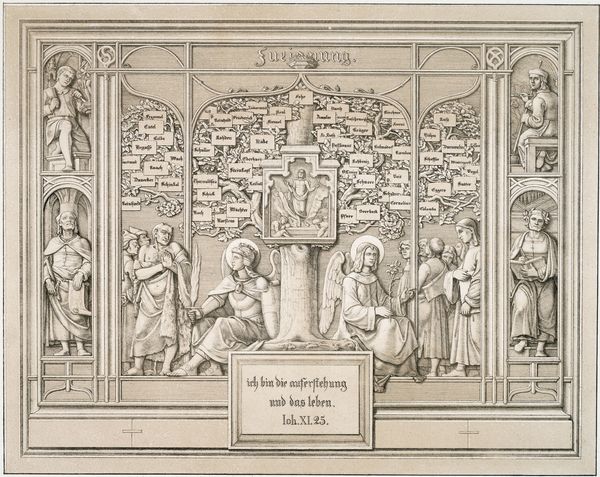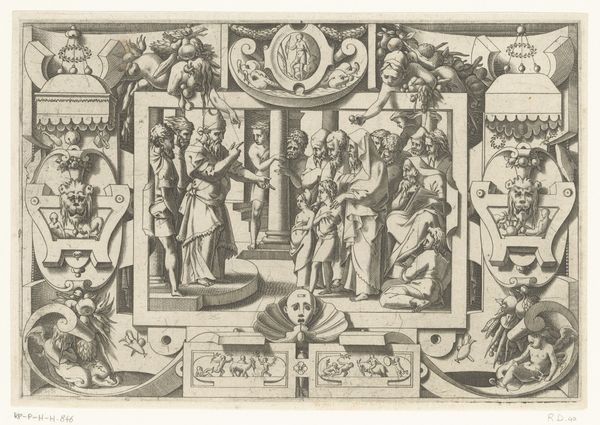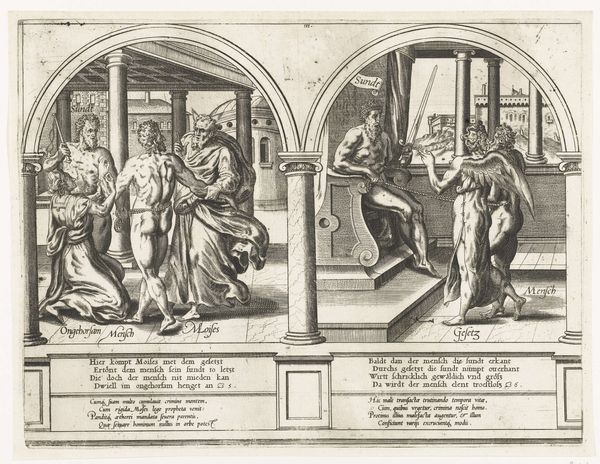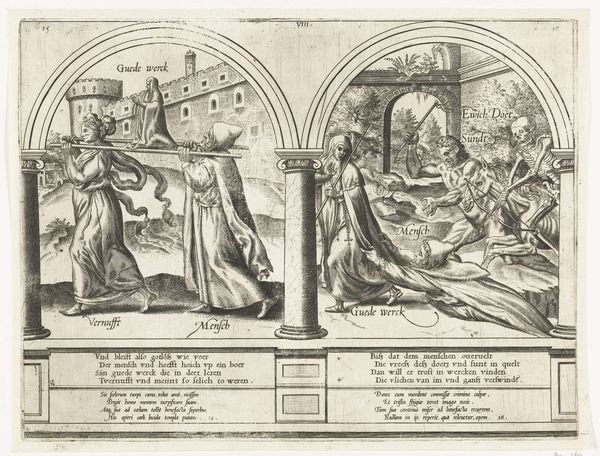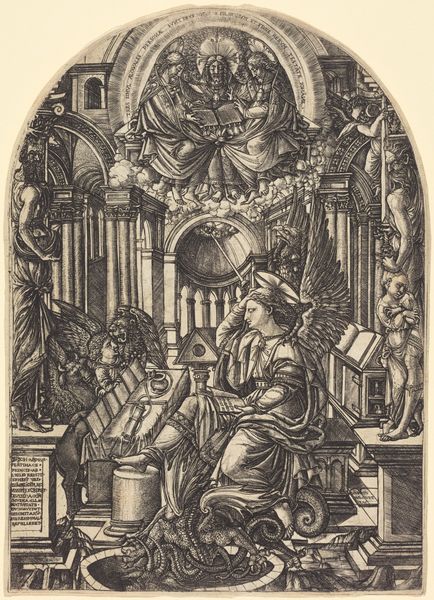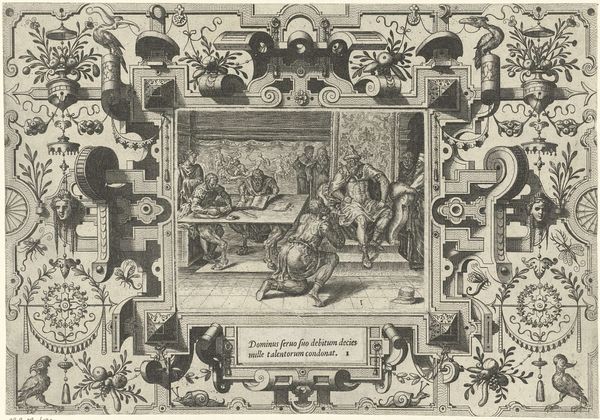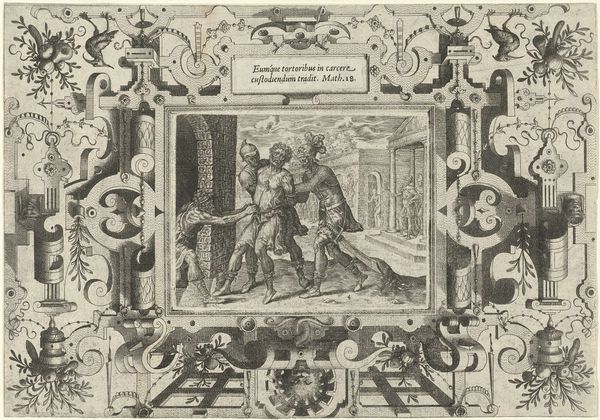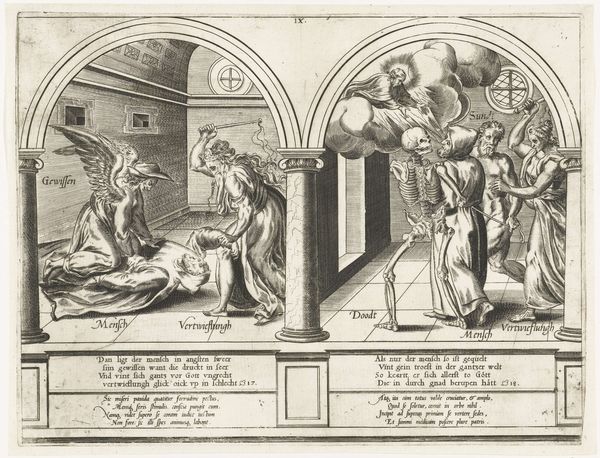
Virgin and Child Enthroned with Saint Anne c. 1512 - 1513
0:00
0:00
print, engraving
#
portrait
#
pen drawing
# print
#
landscape
#
figuration
#
italian-renaissance
#
engraving
Dimensions: sheet: 14.3 x 20.9 cm (5 5/8 x 8 1/4 in.)
Copyright: National Gallery of Art: CC0 1.0
Curator: This engraving, dating from around 1512-1513, presents the Virgin and Child Enthroned with Saint Anne, made by the artist known as Master NA.DAT with the Mousetrap. What catches your eye first about it? Editor: The incredible detail given the medium— it’s so precise, like miniature architecture rendered on a vast, checkerboard stage. I wonder how many hours went into just the lines creating the floor's perspective. Curator: The composition itself draws from a well of symbolic weight. The Holy figures are positioned within what appears to be an elaborately adorned niche or portico— a protected space. Saint Anne is right there with them. Notice the inscriptions, delivered by heraldic angels on either side? They further root the figures into both text and divinity. Editor: Those architectural details aren’t just ornamental. Columns were expensive! This isn't just representation; it's almost a form of idealized display, mimicking the material wealth used to produce similar altarpieces and images in other media at that time. It links earthly labor with heavenly aspiration, or the appearance of such, certainly. Curator: The background is really interesting, too, though seemingly secondary. On the left we have what appear to be everyday villagers tending sheep, but to the right? The depiction has that specific figure of Saint Luke associated as the one kneeling with the ox—a saint associated to painters who created art themselves through observing everyday life and animals in the likenesses to the original in real life. Editor: Precisely! Even within what seems "divine" or "untouchable" you see how it remains tethered to materials, labor, the market, earthly matters. It grounds what could easily slip into the ethereal, or untouchable. It's amazing to see the Renaissance absorbing and transforming medieval iconography, isn’t it? Curator: Absolutely. And to me, seeing it is a reminder of how we're continually inheriting and reimagining these established visual lexicons of history, divinity, culture, faith—for our own time. Editor: Indeed—each engraved line on that print, for me, carries not just the ink but an echo of human effort and ingenuity attempting to touch the infinite through earthly craft and aspiration.
Comments
No comments
Be the first to comment and join the conversation on the ultimate creative platform.

